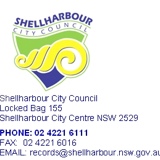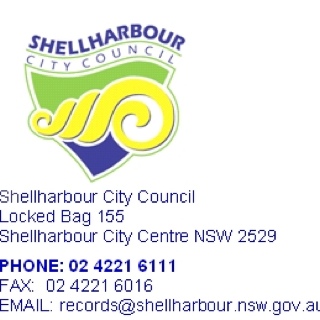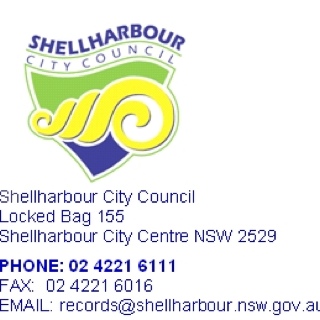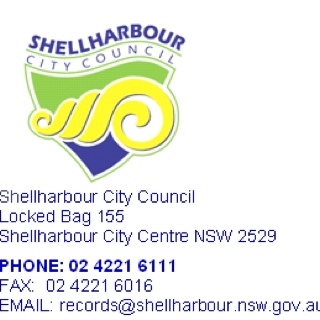Information
-
Address
-
DA No.
-
Conducted on
-
Prepared by
- Adam Urszulak
- Bernard Howard
- Bernie Boland
- Bryce Short
- Joel Harris
- Karri Ryan
- Kate Robinson
- Luke Preston
- Martin Smith
- Scott Boon
- Tyson Perry
SUBDIVISION LOCATION DETAILS
-
Development Application No.
-
Development Proposal
-
Lot
-
DP
-
Assessment Officer
- Adam Urszulak
- Bernard Howard
- Bernie Boland
- Bryce Short
- Joel Harris
- Karri Ryan
- Kate Robinson
- Luke Preston
- Martin Smith
- Scott Boon
- Tyson Perry
-
Assessment Date
-
Signing Officer
- Adam Urszulak
- Bernard Howard
- Bernie Boland
- Bryce Short
- Joel Harris
- Karri Ryan
- Kate Robinson
- Luke Preston
- Martin Smith
- Scott Boon
- Tyson Perry
1. PRELIMINARY
-
DA approval
-
Date of Approval
-
Are there any S96 amendments?
-
Part
- 1
- 2
- 3
- 4
- 5
- 6
- 7
- 8
- 9
- 10
- 11
- 12
- 13
- 14
- 15
-
Part approval date
-
1.1 Check Construction Certificate (CC) fees paid and correct
-
1.2 Check hard copy plans (Engineering plans in A1) and any other required documents are provided
-
1.3 Check electronic copy of "DRAINS" drainage design is provided
-
1.4 Check all application documents and fees paid are registered in ECM & Authority
-
1.5 Check if there are any other current DA's that relate to same site
-
1.6 Access relevant Council Development Control Plan (DCP) that the DA must comply with
-
1.7 Review hard copy of DA (including plans) & identify all items in DA relevant to CC application
2. LAYOUT PLANS
-
2.1 Layout and boundaries of road reserves, pathways, public reserves, lots and easements
-
2.2 Existing contours and final surface contours to be shown
-
2.3 Extent and depth of cut and fill to comply with DA approved plan
-
2.4 Grade, batters and cuts to be provided & to comply with DA approved plan
-
2.5 Details of retaining walls to be provided & comply with DA approved plan
-
2.6 Existing natural features such as cliffs, watercourses, swamps, dams, clusters of trees with diameter of 0.2 or greater
-
2.7 Any environmental, historical or sites of aboriginal significance to be shown on plan
-
2.8 Any improvements on the land
-
2.9 Limit of works including cuts and fills
-
2.10 Road chainages and widths of footpath & carriageway, control points, bench marks, datum & ties to existing boundaries
-
2.11 Kerb & Gutter alignment, profile, footpath & pedestrian ramp locations
-
2.12 Location of subsoil drains
-
2.13 Existing and proposed drainage lines and structures suitably identified & diameter indicated
-
2.14 Notation regarding provision of guide posts and guard rails
-
2.15 Road centreline bearings, centreline, kerb return & cul-de-sac radii
-
2.16 Tangent points to horizontal curves & kerb returns
-
2.17 Large vehicle turning paths in critical areas
-
2.18 Location of existing & proposed service mains
-
2.19 Pavement details & design including structural design for flexible pavement, concrete pavement & segmental pavement
-
2.20 Earthworks, Batters, Cuts & Retaining Walls. Detailed plans and sections may be required
-
2.21 Sediment & Erosion Control Plan
-
2.22 Street furniture, street names signs, traffic management plan
-
2.23 Scale not less than 1:500
3. ROAD LONGITUDINAL SECTIONS
-
3.1 Longitudinal sections are required on all new roads & on existing roads where part width construction is required
-
3.2 New road longsections shall extend 45 metres into existing roads
-
3.3 Road centreline chainage
-
3.4 Tangent points, kerb return tangent points & intersection points
-
3.5 Existing & finished surface
-
3.6 Existing & finished levels including footpaths in cul-d-sac
-
3.7 Existing culverts, sewer, water, gas, electricity
-
3.8 Grades, vertical curves, high points & low points
-
3.9 Limit of work to be shown on plans
-
3.10 Scales shall not be less than 1:500 H & 1:100 V
4. ROAD CROSS SECTIONS
-
4.1 Cross sections shall be provided at a maximum of 15 metre intervals, tangent points and other critical locations.
-
4.2 Cross section shall extend a minimum of 5 metres beyond road reserve boundaries
-
4.3 Cross section scale shall be not less than 1:200
-
4.4 Details to be shown on cross sections:<br>• Chainage & offsets<br>• Existing & finished surface <br>• Existing Finished surface levels<br>• Cross sections at Kerb Return TP's, half width sections at IPs shall be shown<br>
5. KERB RETURN DETAIL PLANS
-
5.1 Kerb return detail plans shall be provided for all intersections & cul-de-sac
-
5.2 Plans shall be at a scale of not less than 1:200
-
5.3 Details to be shown on kerb return plan:<br>• kerb return layout plan<br>• Finished pavement surface contours<br>• Drainage details<br>• Lot numbers of adjacent lots<br>
6. KERB RETURN LONGITUDINAL SECTIONS
-
6.1 Shall be provided for all intersections & cul-de-sacs
-
6.2 Low point shall be beyond the TP of the kerb return
-
6.3 Long section shall extend minimum of 5m beyond TP's
-
6.4 Sections shall be presented at a scale of 1:200 H & 1:50 V
-
6.5 Details to be shown on KR longsection:<br>• Kerb chainage<br>• Finished surface<br>• Finished levels<br>• Low Point<br>• High points<br>• Vertical curve details<br>
7. DRAINAGE LONGITUDINAL SECTIONS
-
7.1 Shall be provided for all drainage lines including interalotment lines
-
7.2 Scale shall be 1:500 H & 1: 100 V
-
7.3 The following details required:<br>• Chainage<br>• Existing & finished levels<br>• Existing & finished surface levels at each pit/headwall & at 15m max intervals<br>• Pipe invert at each pit/headwall<br>• Drainage structures<br>• Pipe grade, design discharge, velocities, pipe class & pipe bedding details<br>• Hydraulic Grade Line<br>• Service locations<br>
8. CATCHMENT PLAN
-
8.1 Scale not less than 1:1000
-
8.2 The following details required:<br>• Layout & boundaries of road reserves, pathways, public reserves, lots & easements<br>• Existing & proposed drainage lines, both major & minor routes including interalotment drainage lines<br>• Catchment & subcatchment limits with contributing area in hectares.<br>• Final surface contours<br>• Crests & Sags in roads<br>• Existing watercourses<br>• Adjacent contributing catchments with contributing area in hectares<br>• Limit of inundation by the 1 in 100 year Average Recurrence Interval Flood<br>
9. Erosion & Sediment Control Plan
-
9.1 Scale not less than 1:1000
-
9.2 Plan shall be approved by DECCW prior to being lodged with council
-
9.3 The following details required:<br>• Layout & boundaries of road reserves, pathways, public reserves, lots & easements<br>• Existing contours & final surface contours<br>• Location of existing vegetation & proposed vegetated buffer strips<br>• Location of critical areas (vegetated buffer strips, drainage lines, water bodies, unstable slopes, flood plains & seasonal wet areas)<br>• Diversion of uncontaminated runoff around areas to be disturbed <br>• The nature & extent of proposed earthworks, including areas of cut & fill.<br>• Location of erosion & sediment control structures. Specification for maintenance of control works<br>• Details for disposal of intercepted sediment<br>• Rehabilitation proposals<br>• Dust control measures<br>
10. ROAD DESIGN CONTROLS
-
10.1 Footpath Crossfalls<br>• Standard 4%<br>• Maximum 6%<br>• Minimum 2%<br>• Overland Flow -1%<br>
-
10.2 Road Pavement Crossfall<br>• Standard 3%.<br>• Maximum 6%.<br>• Minimum 2%<br>
-
10.3 Max Grade for 6m & 11m roads shall be 16%. Grades up to 20% can be considered
-
10.4 Max Grade for > 11m roads shall be 10%
-
10.5 Min Grade for any road 0.5%
-
10.6 Lengths of roads at limiting grades to be kept at minimum
-
10.7 Cul-de-sac crossfall min 1.5% max 8%
-
10.8 Maximum batter slope not to exceed 4%
-
10.9 Minimum Kerb Return radius 7.5m
-
10.10 Minimum cul-de-sac radius 10.5m
-
10.11 Minimum centreline radius 30m
-
10.12 Sight distance at intersections to comply with AUSTROADS "Guide to Road Design"
-
10.13 Lengths of vertical curves shall be determined AUSTROADS "Guide to Road Design"
-
10.14 Minimum length of vertical curve at intersection of minor road with the through road shall be 8m
-
10.15 Minimum angle of intersections shall be 70 degrees
-
10.16 At intersections the minor road shall be graded to conform with the levels of the gutterline of the through road
11. DRAINAGE
-
11.1 Estimation of discharge shall be by a method detailed in "Australian Rainfall & Runoff"
-
11.2 "Drains" program to be used for modelling
-
11.3 Design average recurrence:-<br><br>Roadway, accessway <br>Minor - 1 in 10<br>Major - 1 on 100<br>Relief of low point through private property. Allow for blockages<br>Minor - 1 in 100<br>Major - 1 in 100<br>Relief of low point through public open space<br>Minor - 1 in 10<br>Major - 1 in 100<br>Dual use Floodway (passive open space)<br>Minor - 25% of 1 year flow<br>Major - 1 in 100<br>Detention basins (passive open space)<br>Minor - 25% of 1 year flow<br>Major - 1 in 100<br>Spillway to allow for PMF<br>Dual use Detention Basins (Active open space)<br>Minor - 1 in 1<br>Major - 1 in 100<br>Spillway to allow for PMF<br>Subsoil drainage to be installed<br>
12. DRAINAGE DESIGN CONSTRAINTS
-
12.1 Maximum width of flow in gutter is 2.45m
-
12.2 Depth in gutter not to exceed 200mm for 1 in 100 event
-
12.3 Bypass flow at pit not to exceed 20%
-
12.4 Minimum pipe size draining public areas 375mm diameter
-
12.5 Min Inter-allotment drainage line is 150mm diameter, 400mm deep
-
12.6 Maximum water level in pit shall be 150mm below gutter invert
-
12.7 Maximum spacing of pits is 100m
-
12.8 Minimum velocity 0.6m/s Max velocity is 8m/s
-
12.9 Velocity of flow outside of pipelines & designated floodways is 0.4m/s. Roadways.
-
12.10 Ilsax model parameters <br>Soil type 3<br>AMC 3<br>Paved area depression storge 1mm<br>Pervious area depression storage 5mm<br>
-
12.11 Impervious areas<br>Residential 45%<br>Road reserve 70%<br>Medium Density Res 80%<br>Commercial 100%<br>Industrial 100%<br>Public Rec 25%<br>
-
12.12 Inlet lengths<br>Nominal 1.8<br>2.4 & 3.00 acceptable <br>
-
12.13 Pipes & culverts to be designed using Hydraulic grade line method
-
12.14 Pipe Friction Losses<br>Spun concrete 0.3<br>Fibre reinforced cement 0.06<br>uPVC 0.06<br>
-
12.15 Pit Head Losses<br>As per recommendations in Code<br>
13. OPEN DRAINS
-
13.1 Velocity depth product shall not exceed 1m/s
-
13.2 Max velocity in grass lined channels not to exceed 2m/s
-
13.3 Max velocity in hard lined channels 6m/s
-
13.4 Max batter slopes in channels 1 in 6
-
13.4 Floodways signposted
-
13.5 Fencing
-
13.6 Indentify GPT requirements
14. FLOODWAYS
-
14.1 Discharge not to exceed pre-developed discharge
-
14.2 No increase in flooding downstream
-
14.3 Embankment have freeboard 500mm above 1 in 100
-
14.4 Spillway to safely pass the PMF
-
14.5 Batters not to exceed 1 in 6
-
14.6 Outlet requirements to be discussed with council
-
14.7 Floor to be free flowing & not waterlog
-
14.8 If pond fits into dam category it will need NSW Dam Safety approval
15. ROADWORKS
-
15.1 Pavement to be designed by geotech & be based on road hierarchy
-
15.2 Subgrade or subgrade replacement shall be compacted to 100% standard or 95% modified
-
15.3 Subsoil drains to be placed on topside of carriageway or elsewhere as required. Obvert of subsoil to be 150mm below finished subgrade level
-
15.4 Subbase to extend 150mm outside back of kerb & be compacted to 95% modified
-
15.5 Basecourse to be compacted to 98% modified
-
15.6 Wearing surface to be 1 layer a minimum of 40mm AC10.<br>Roundabout to be special polybuilt roundabout mix <br>
16. KERB & GUTTER
-
16.1 Kerb to be either Roll Kerb or Barrier Kerb depending on DA consent
-
16.2 Concrete for K & G be 20Mpa special mix
-
16.3 Metal kerb outlet for each lot where lot drains to street
-
16.4 Expansion joint every 9m tool joint every 3m
17 STORMWATER STRUCTURES
-
17.1 Pipes to be either reinforced concrete or fibre reinforced cement with rubber ring joints. Class of pipe determined by cover
-
17.2 Inter-alotment drainage can be Sewer grade uPVC pipes
-
17.3 All stormwater mains to be CCTV at completion
-
17.4 "Bird mouth" pit entries not permitted
-
17.5 Pits > 0.9 to have steps (galvanised steel NOT plastic coated)
-
17.6 Pits > 1.8 deep require reinforcing designed by structural engineer
-
17.7 Pits to be rendered and self flushing
-
17.8 Lintel inlets only at sag or low spots
18. GRASSING
-
18.1 Areas to be grassed or turfed to be ripped along the contour, 100mm topsoil placed, then seeded or turfed
-
18.2 Developer to maintain grassed areas during defects liability period
19. MANDATORY NOTES
-
19.1 Service conduits to be installed prior to any pavement material
-
19.2 Inspections to be arranged in accordance with code
-
19.3 Bonds/Guarantees can be arranged for incomplete work eg asphalt, footpaths, landscaping, minor corrections
-
19.4 Developer to maintain site during defects Liability period which is for 6 months or until developer satisfactorily completes all work
20. APPROVAL
-
Satisfactory?
-
Signature
-
Date









